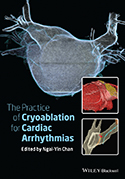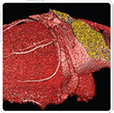
The Practice of Catheter Cryoablation for Cardiac Arrhythmias
Edited by Ngai-Yin Chan


Cases
Case 5.2 A 73-year-old woman with refractory paroxysmal atrial fibrillation
A 73-year-old woman was undergoing ablation with the 28 mm cryoballoon for refractory paroxysmal atrial fibrillation. After isolation of both left pulmonary veins, the right upper pulmonary vein was occluded with the 28 mm balloon, which was perfectly centered. Using the upside-down technique and a deflectable quadripolar 6F stimulation catheter in the superior caval vein, the phrenic nerve was stimulated in 2-second intervals. The amplitude of diaphragmatic excursion palpated through the abdominal wall was noted to decrease after 200 seconds of freezing.
-
1. How should one respond to this phenomenon?